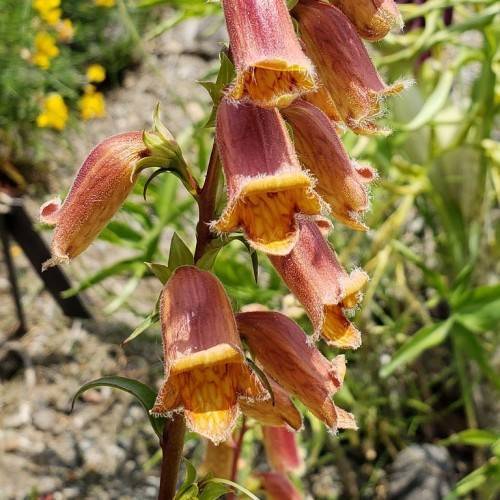
willow-leaved foxglove
Digitalis obscura
Cycle:
Herbaceous Perennial
Watering:
Average
Hardiness Zone:
4 - 8
Flowers:
Flowers
Sun:
Part shade
Leaf:
Yes
Growth Rate:
Low
Maintenance:
Low
Poisonous To Humans:
Yes
Poisonous To Pets:
Yes
Drought Tolerant:
Yes
Invasive:
Yes
watering
The amount and frequency of watering for willow-leaved foxglove (Digitalis obscura) will depend on the stage of growth of the plant and the weather conditions it is exposed to. During the winter months, the plant can survive with minimal watering; once every 2 to 3 weeks should suffice. However, in the spring and summer, when the plant is actively growing and flowering, it should be watered more often, typically once every week or 2. For best results, soil that the plant is in should be allowed to dry out somewhat between waterings. If the soil is too wet for too long, it could lead to root rot and other plant diseases. Also, make sure to water the plant from the bottom, i.e. submerging the container in a bucket of water or using a hose with a shallow setting. Also be sure to use lukewarm water!
sunlight
Willow-Leaved Foxglove plants prefer cool to moderate climates with direct sunlight for part of the day. The plants should receive 4-7 hours of bright sunlight per day, ideally during the cool part of the day in the morning or late in the afternoon. Avoid direct mid-day sunlight as the leaves may burn in extreme heat. It is important to provide afternoon shade in particularly hot climates to ensure the plant's health.
pruning
Willow-leaved foxglove (Digitalis obscura) is a herbaceous perennial plant that prefers well-drained soil and full sun. Pruning of this plant should be done annually in late winter. Cut any dead material, such as buds, leaves or stems, off the plant. This will help to remove any disease or insect damage and allow the plant to focus its energy on producing new growth. Pruning should also be done to reduce the size of the plant, as it can become leggy and unruly when allowed to grow too tall. For a bushier and more compact growth, a light pruning of remove a few of the oldest stems and their buds just above the base of the plant can be done in late winter or early spring. This should be done yearly to keep the plant looking its best.
